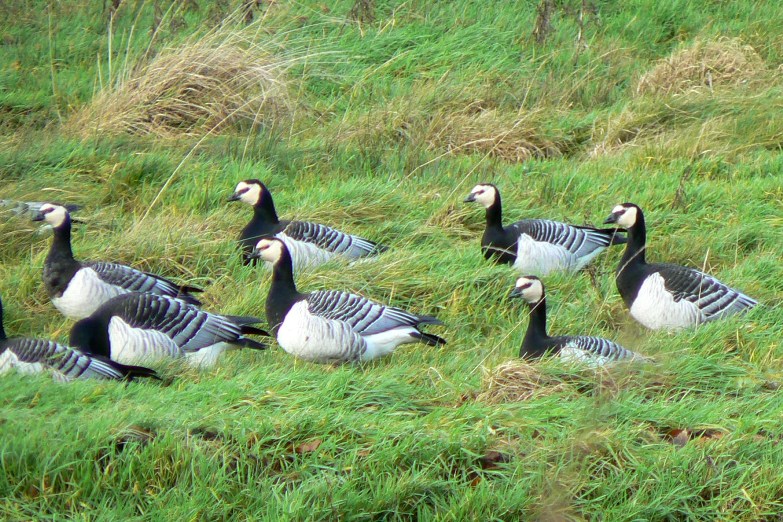
[056] Branta leucopsis, Barnacle Goose
Introduction
Branta leucopsis, the Barnacle Goose, is a Black Goose which breeds in the far North and winters in sites in Scotland and elsewhere.
There is also a feral population in Norfolk and another small feral population resident in and around the Slimbridge wetlands and Frampton-on-Severn.
We saw [055] the Canada Goose yesterday. This post will also consider the Nene (Hawaiian Goose) and other Branta species.
Taxonomy
Kingdom – Animals
Phylum – Chordates
Class – Aves (Birds)
Order – Anseriformes (Waterfowl
Family – Anatidae
Subfamily – Anserinae (Geese and Swans)
Genus – Branta
Scientific Name – Branta leucopsis
Name
We can blame Gerald of Wales (Circa 1146-1223) an Archdeacon of Brecon for the myth that led to the name of this bird. Like many birds, we only saw these geese in winter and nobody knew where they came from. Gerald claimed to have seen them emerging from barnacle shells and so it was thought that the two were two forms of the same animal. The barnacle is now called the Goose Barnacle.
Until about two hundred years ago, in some places Roman Catholics who abstained from meat during Lent could still eat the Barnacle Goose as it was considered to be a fish.
Another goose, Branta bernicla, known to us now as the Brent Goose was at the time considered to be the same species, and that was the one that kept the name ‘bernicla’ meaning barnacle.
Leucopsis, from Greek roots means white-face.
Barnacle Goose
The Barnacle Goose is significantly smaller than the Canada Goose. It has a black neck and back, and a white face and breast. Both areas of white are larger than the Canada Goose. The back is noticeably barred with white.
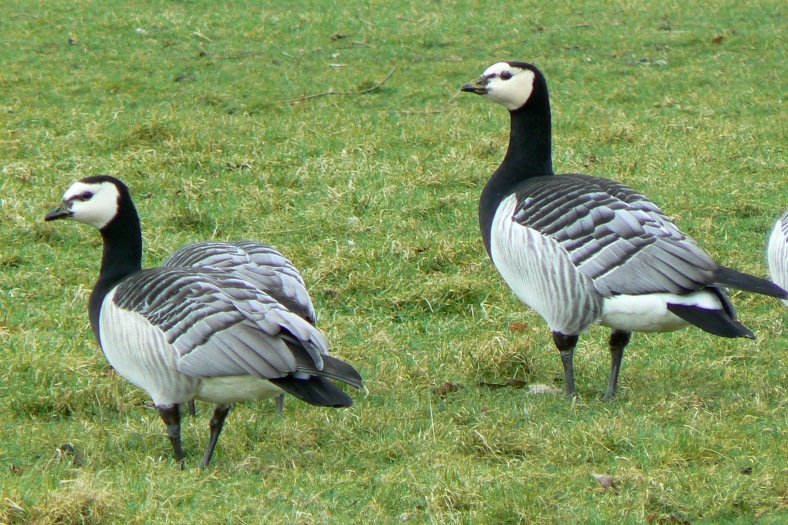

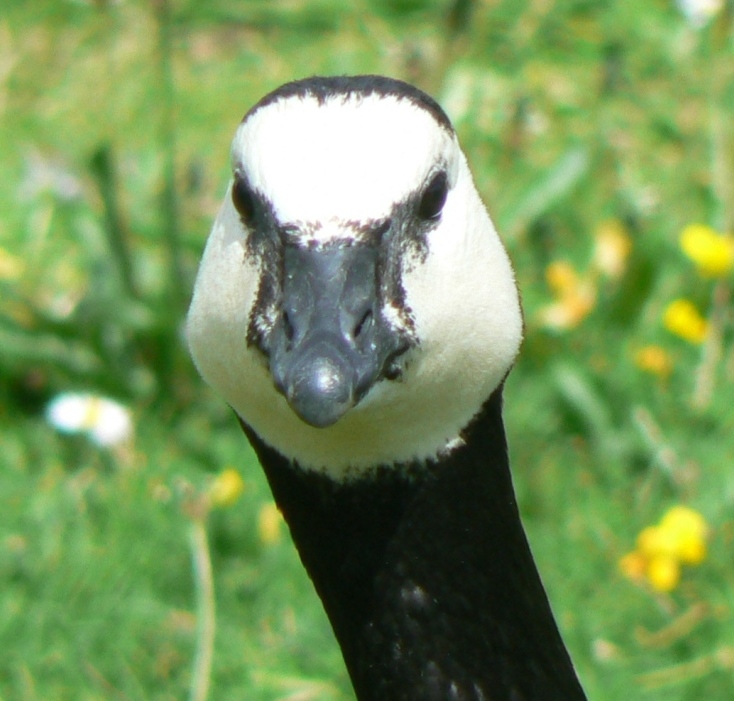
Goslings are less marked, mostly grey.
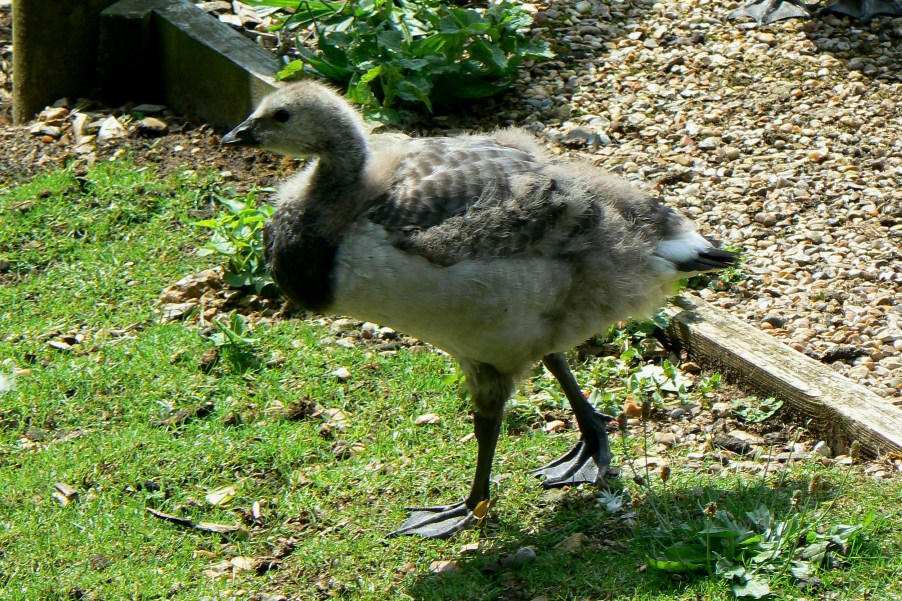
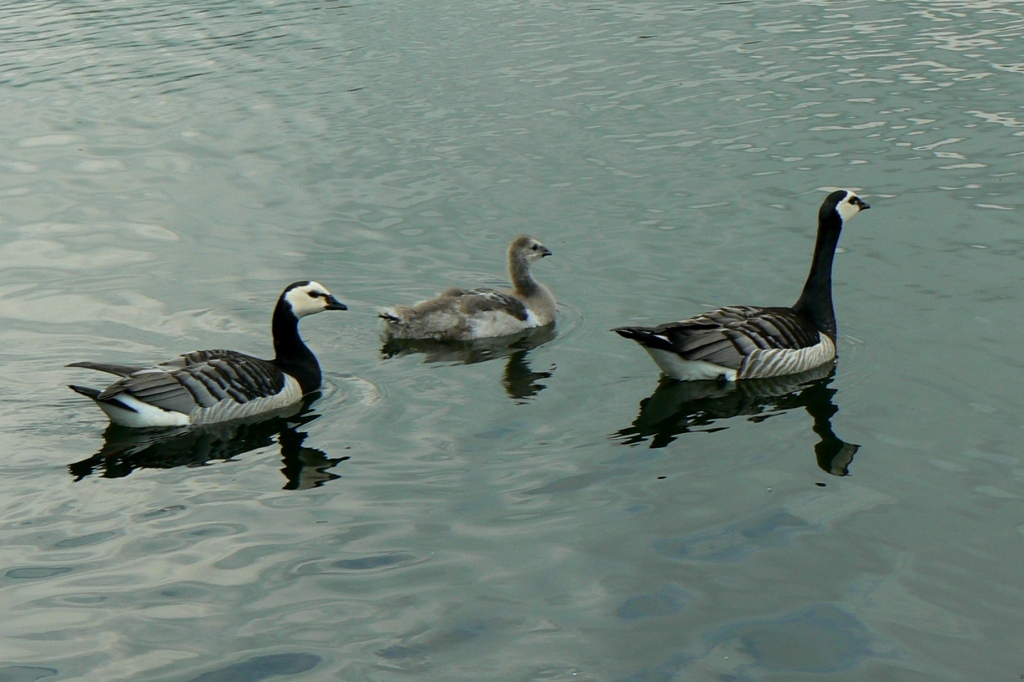
Habitat
Three separate wild populations breed in Eastern Greenland, Svalbard and Novaya Zemlya. The Greenland population winters in Western Ireland and the Hebrides. The other two go to the Solway Firth and the Netherlands respectively.
The local feral populations are not migratory.
Other Notes
They can be seen at Frampton where they will share their grass with sheep.
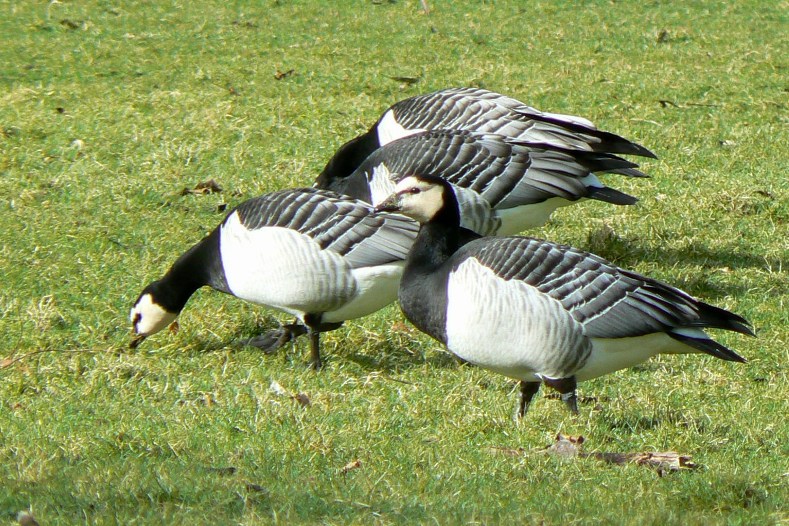

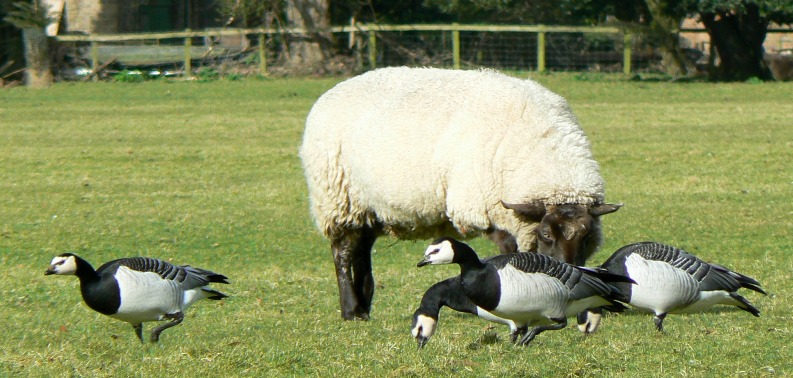
Nene
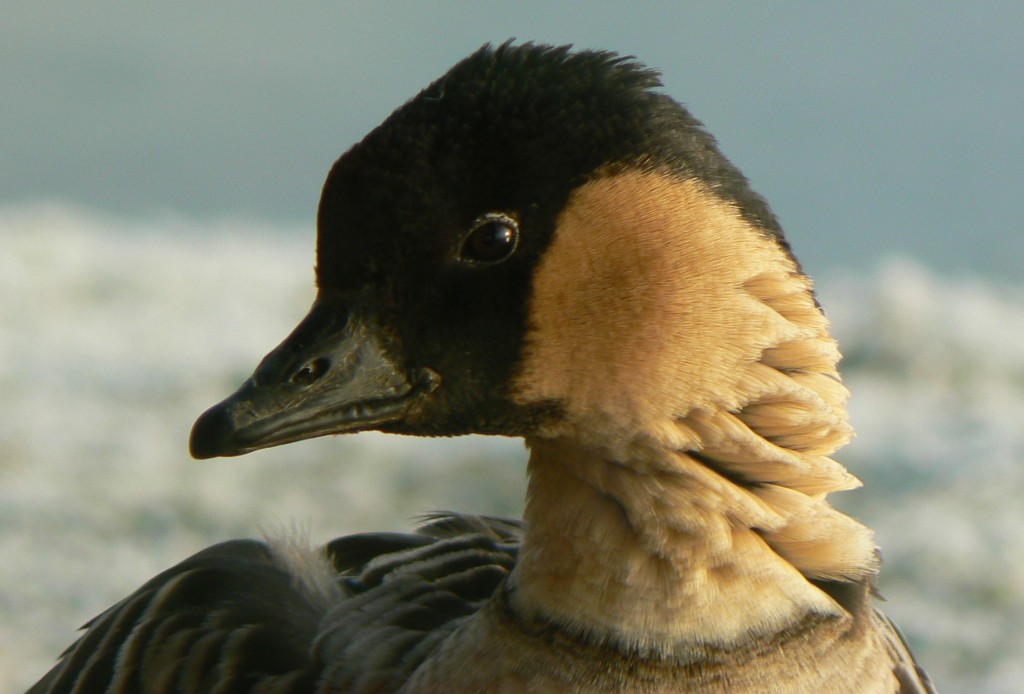
Branta sandvicensis is the Nene, also known as the Hawaiian Goose. The word Nene, the name of this bird in Hawaiian, comes from the sound of its call. Hawaii used to be known as the Sandwich Islands.
Like many species on isolated islands, this species diverged from the rest of the World just after the islands of Hawaii were formed, about half a million years ago.
Its body is barred in shades of grey, separated from the neck by a dark band. The neck becomes a buff colour at the face, and the face and the top and back of the head are black. Both sexes look similar.
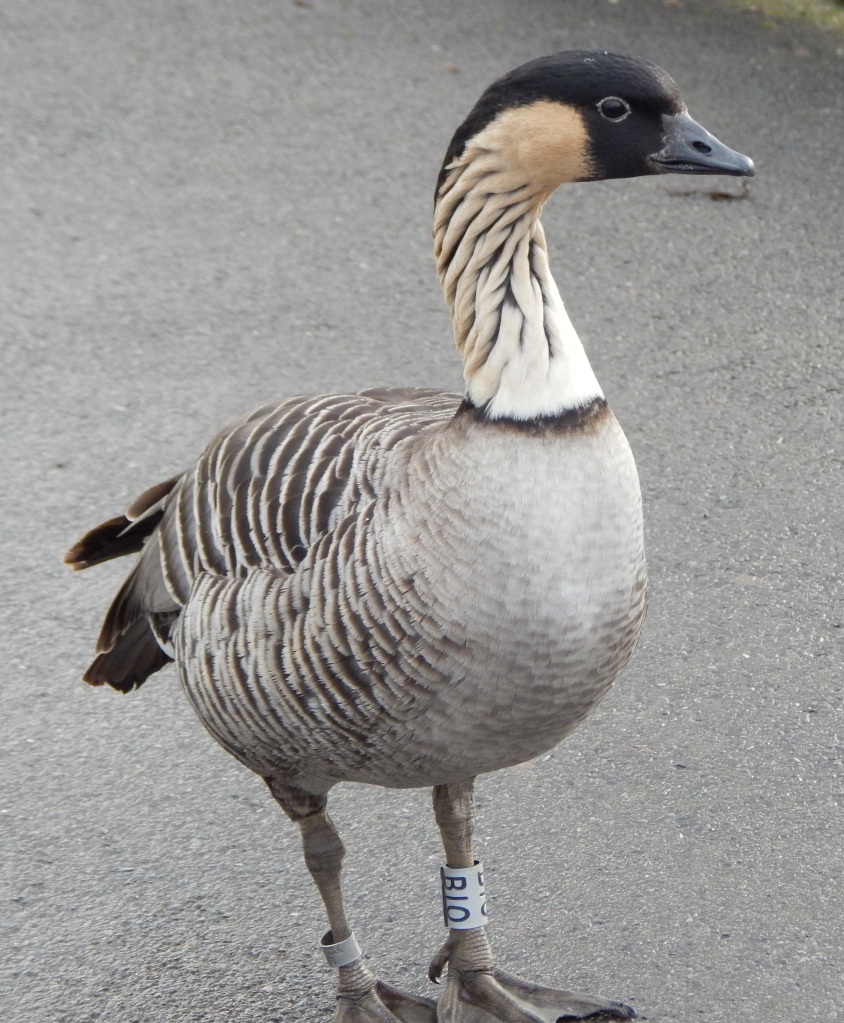


In its natural habitats in Hawaii this goose inhabits shrubland, grassland and volcanic lava plains. So, its webbed feet have adapted,
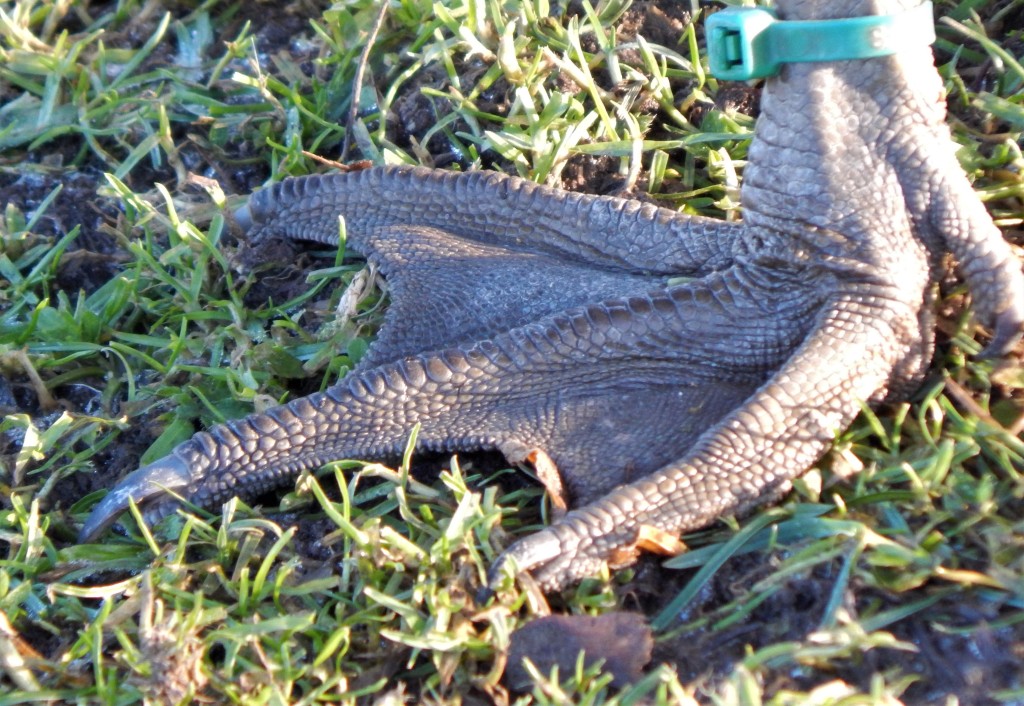
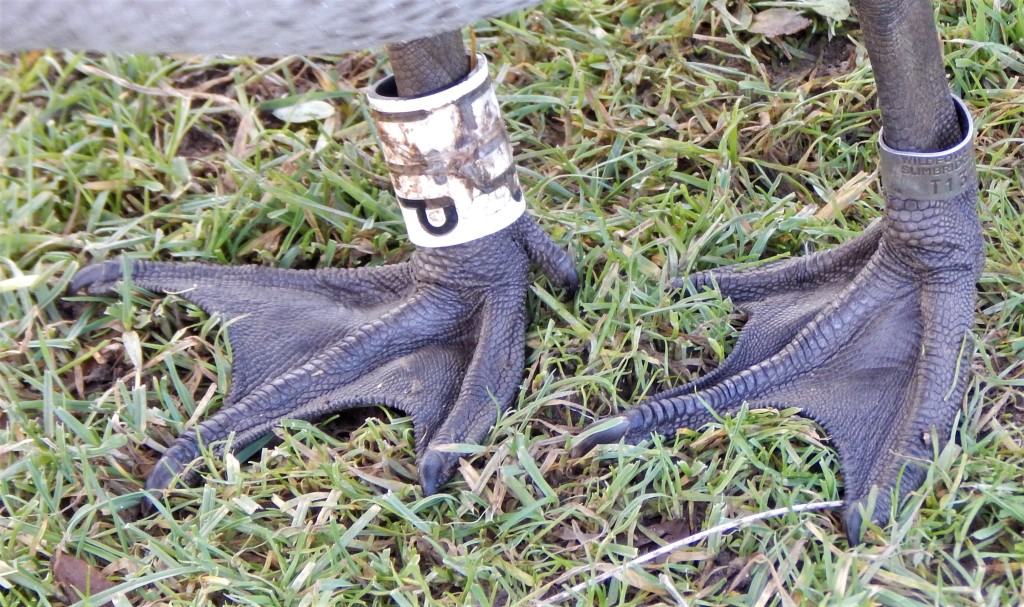
I see these birds at Slimbridge where they may now be more common than in Hawaii. They breed successfully there and some have been released back to repopulate their native locations.

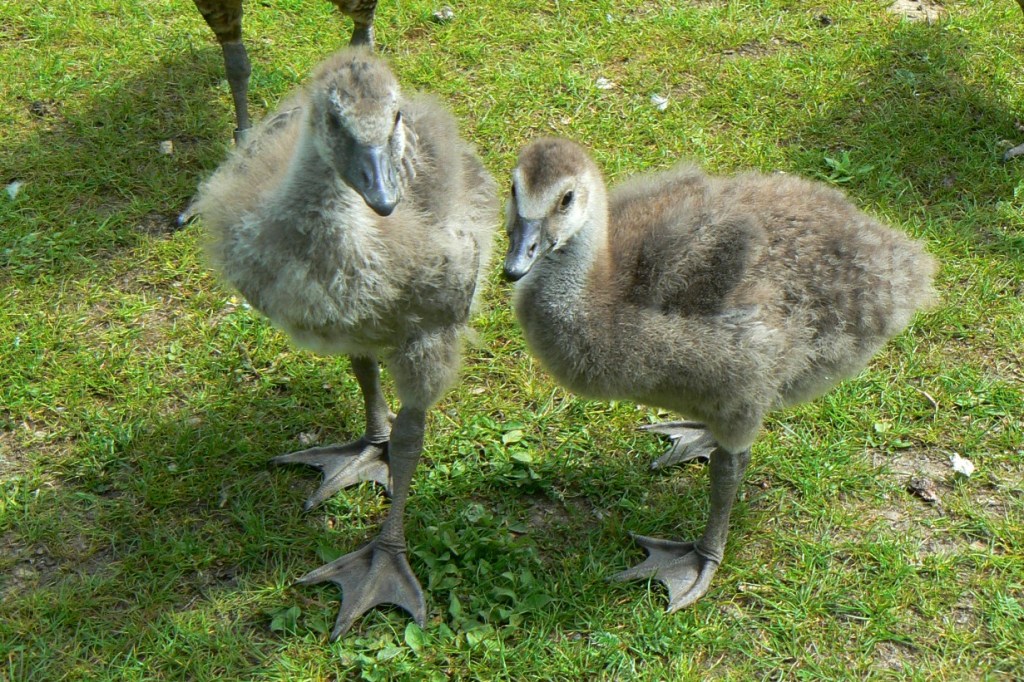
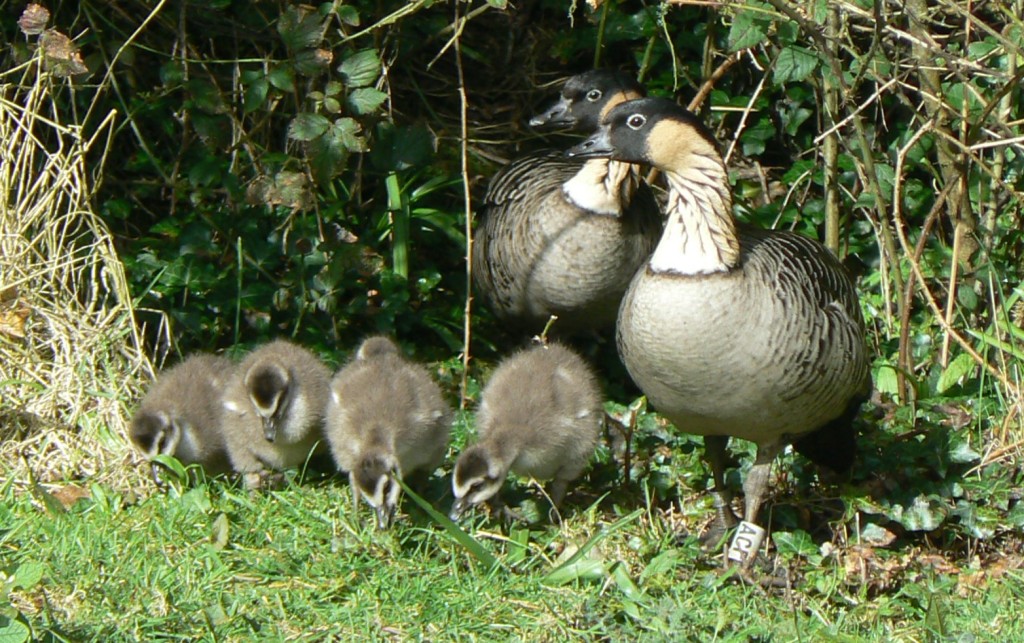

See also
Others species in the Branta genus.
- Canada Goose, Branta canadensis – see [055]
- Brent Goose, Branta bernicla. Visually similar to the Barnacle Goose but not so closely related. Seen in coastal locations of Britain, especially in Winter.
- Red-breasted Goose, Branta ruficollis. The smallest Branta. It does have red breast. Summer in Siberia and Winter on the Black Sea.
- Cackling Goose, Branta hutchinsii. Very similar to the Canada Goose but smaller. Only seen in North America and the tip of Siberia,
